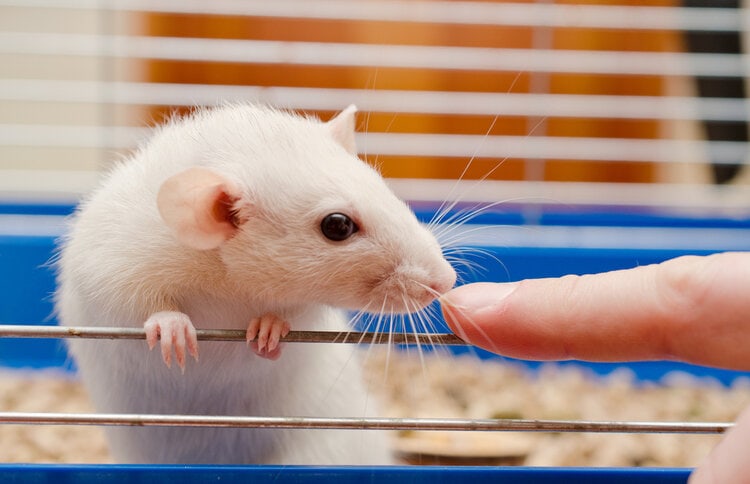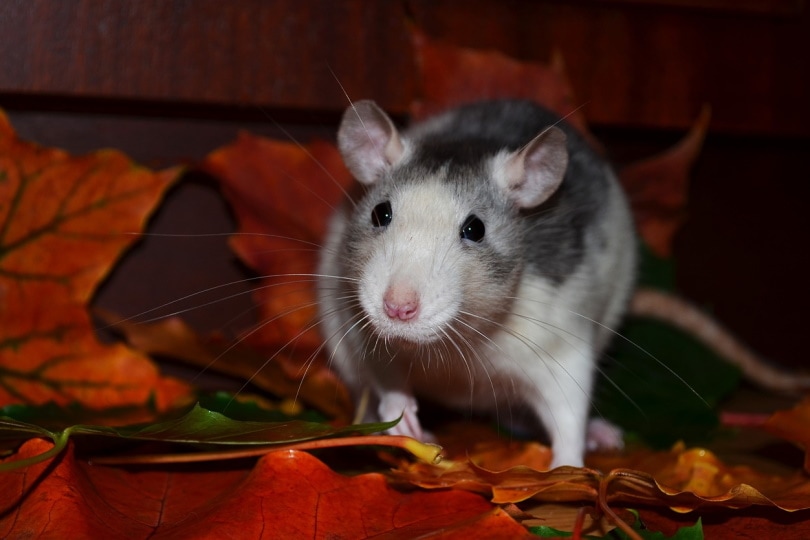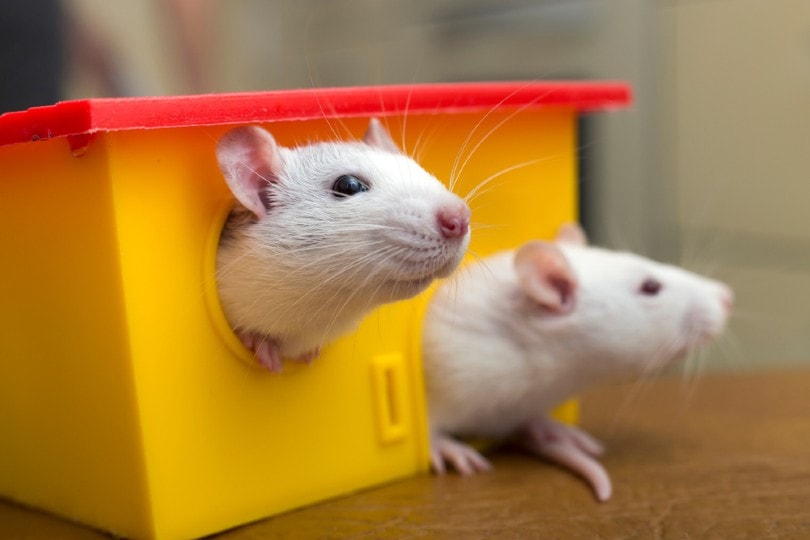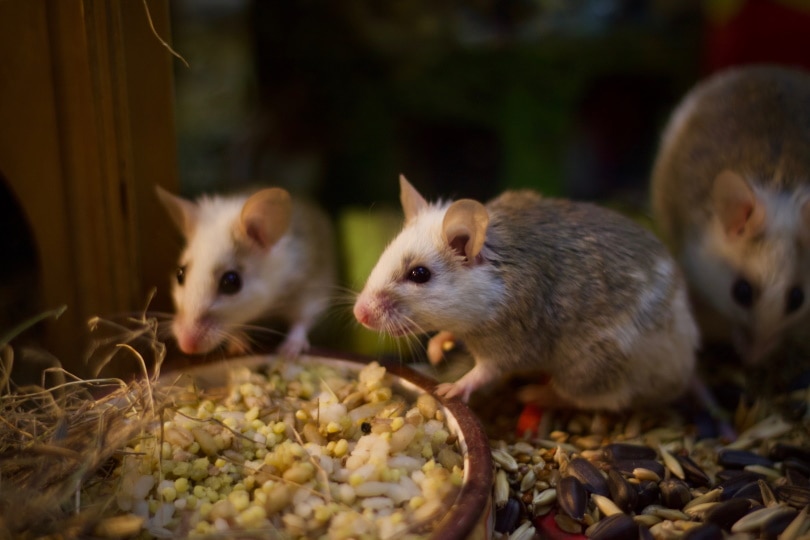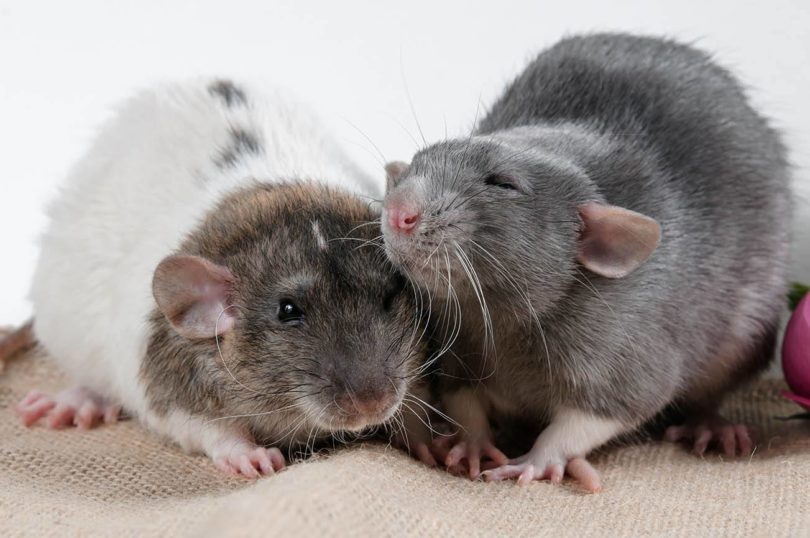
Click to Skip Ahead
It isn’t unheard of for pet owners to unexpectedly have a litter of baby rats on their hands, and rats can breed fairly easily. If you have male and female pet rats and do not want a litter of newborns anytime soon, you can separate the males and females before they reach the age of sexual maturity.
It is a good idea to separate male and female rats after they are 5 weeks old since they can reach sexual maturity at this point. However, 5 weeks is not the most accurate estimation of when rats reach sexual maturity. For male rats, it takes an average of 6 to 10 weeks for them to reach sexual maturity. For females, sexual maturity occurs around 8 to 12 weeks.

How to Breed Rats
Whether you want to avoid a new litter of rats or you want to breed them intentionally, you will need to know what is required for rats to breed. It turns out, very little is needed to encourage rats to mate.
If a male and female rat are in the same enclosure while the female rat is in heat, there is a high chance of pregnancy. The female will do a mating dance to signal the male that she is ready to mate, which involves darting around and twitching her ears. If you keep the male and female rats in the same enclosure for at least 10 days, the equivalent of two heat cycles, you can practically guarantee a pregnancy. In truth, it may only require one day.
If you do not want a litter of baby rats under your care, you will need to be vigilant with your male and female rats. Males and females should not be kept together after they reach sexual maturity. They should not even be allowed to play together temporarily.
During heat, female rats may get crafty and find ways to escape to mate with males. As for the males, if they are persistent, they may be able to activate a female into early heat. Neutering or spaying your rats is the only way to guarantee that there will be no accidental pregnancy.
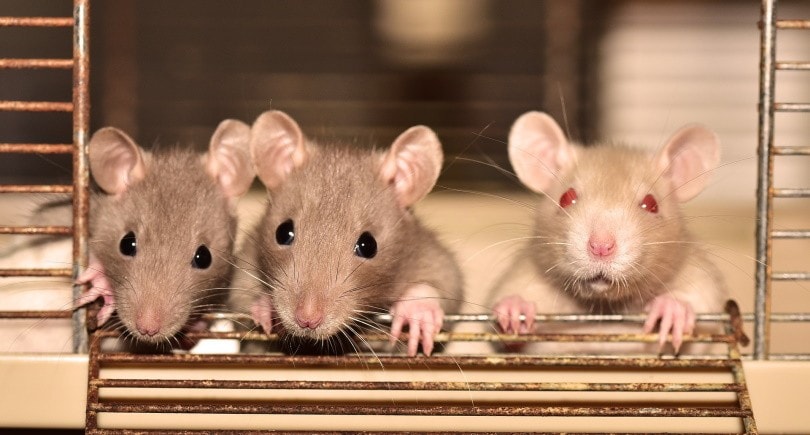
What Factors May Impede a Rat’s Ability to Reproduce?
Although breeding rats is normally very easy, some factors may hinder mating. Environmental factors such as cold temperatures, insufficient nesting material, or irregular light cycles can prevent rats from mating. Physical conditions such as malnourishment, tumors, and ovarian cysts may also impede rat breeding.
If you are trying to breed your rats and find yourself unsuccessful, one of the issues above may be the root of your problems. Reach out to your veterinarian to rule out the possibility of health complications, then look to your rat’s environment for solutions.
What to Expect During Your Rat’s Pregnancy
The gestation period for rats typically lasts for 22 days, although this number can vary. 2 weeks into pregnancy, you may notice that the female rat’s abdomen is growing larger. Her mammary glands will also grow larger, and as the pregnancy develops, you may see the baby rats moving inside of her.
Don’t be surprised if your pregnant rat experiences a temporary personality change. Like humans, pregnancy alters a rat’s hormones and can cause a personality shift. After the babies are born, she will most likely return to her natural temperament.
During the pregnancy, you will need to keep up with your female rat’s needs. Thankfully, she only requires good nutrition, exercise, and additional nesting material. If the male rat has been living with the female during the pregnancy, you should remove him before she gives birth.
Female rats go into heat within 48 hours after labor, so if you leave them together after she gives birth, they may immediately become pregnant again. This is not good for her health since she needs time to recover and nurse her new litter.
Neutered rats can stay with the pregnant female as long as the enclosure has adequate space for the female to enjoy privacy with her litter. New rats should not be introduced into a cage with a new litter, as the mother will viciously attack the newcomer.
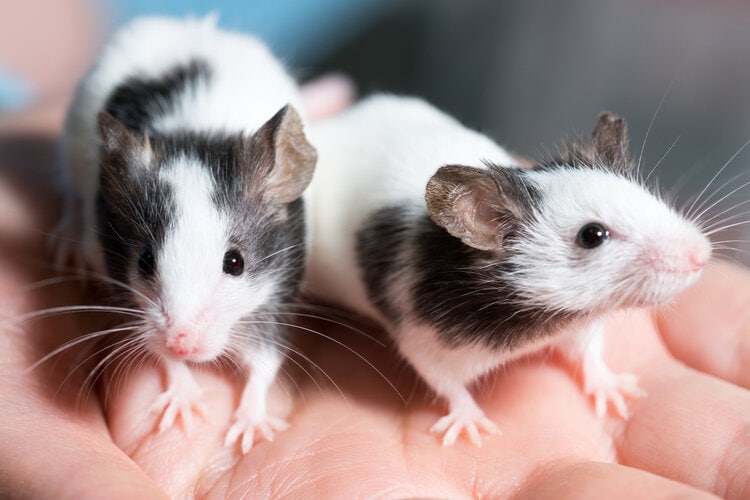
The Birthing Process
Generally, you can expect the labor process to take an hour or two. On average, the mother will birth a new baby every 5 to 10 minutes and have around 6 to 13 “pups” in a litter.
The first sign of labor will be bloody discharge. Then, your female rat will stretch out and deliver the babies, helping them along by pulling them out. Once the process is complete, she will nurse her babies.
Caring for the Litter
The litter should not be disturbed until a week after birth, although you should check on them daily to ensure they are all growing properly. The litter will be born toothless and hairless. Their limbs will be short, and they will be deaf and blind. However, baby rats grow fast, so this will soon change. Around 2 weeks of age, you should play with the babies and handle them as much as possible. This will help them socialize.
Don’t forget to remove the males from the cage after they reach 5 weeks of age. Although it may feel like they were just born yesterday, 5 weeks is the starting point for sexual maturity.
Possible Dangers the Litter May Face
There are a few potential dangers to be aware of for infant rats. For instance, if there is a wheel in the cage, you will need to verify that there is enough room between the bottom of the wheel and the floor. If there is not at least an inch and a half of space, a baby rat may find itself stuck between the wheel and the floor and suffocate.
Another potential hazard to the litter is, unfortunately, their mother. While most female rats are excellent mothers with good instincts for how to care for their young, there are occasions when she may be a threat to her own offspring. If a mother is malnourished, stressed, or lacking necessary nesting materials, she may abort, abandon, or even eat her own babies.

Conclusion
Rats can reach sexual maturity at a young age, and breeding is astonishingly easy for them. For this reason, many accidental pregnancies occur in pet rats. However, if you are aware and prepared, you can prevent unwanted rat pregnancies or encourage breeding intentionally. Be sure you are in regular communication with your vet to ensure the health and well-being of the mother and her babies and don’t forget to come up with plenty of cute baby names.
Featured Image Credit: LankaP, Shutterstock

